How to Eat Your Way Through Ho Chi Minh (Saigon) Like a Local
The best food in Saigon, Vietnam
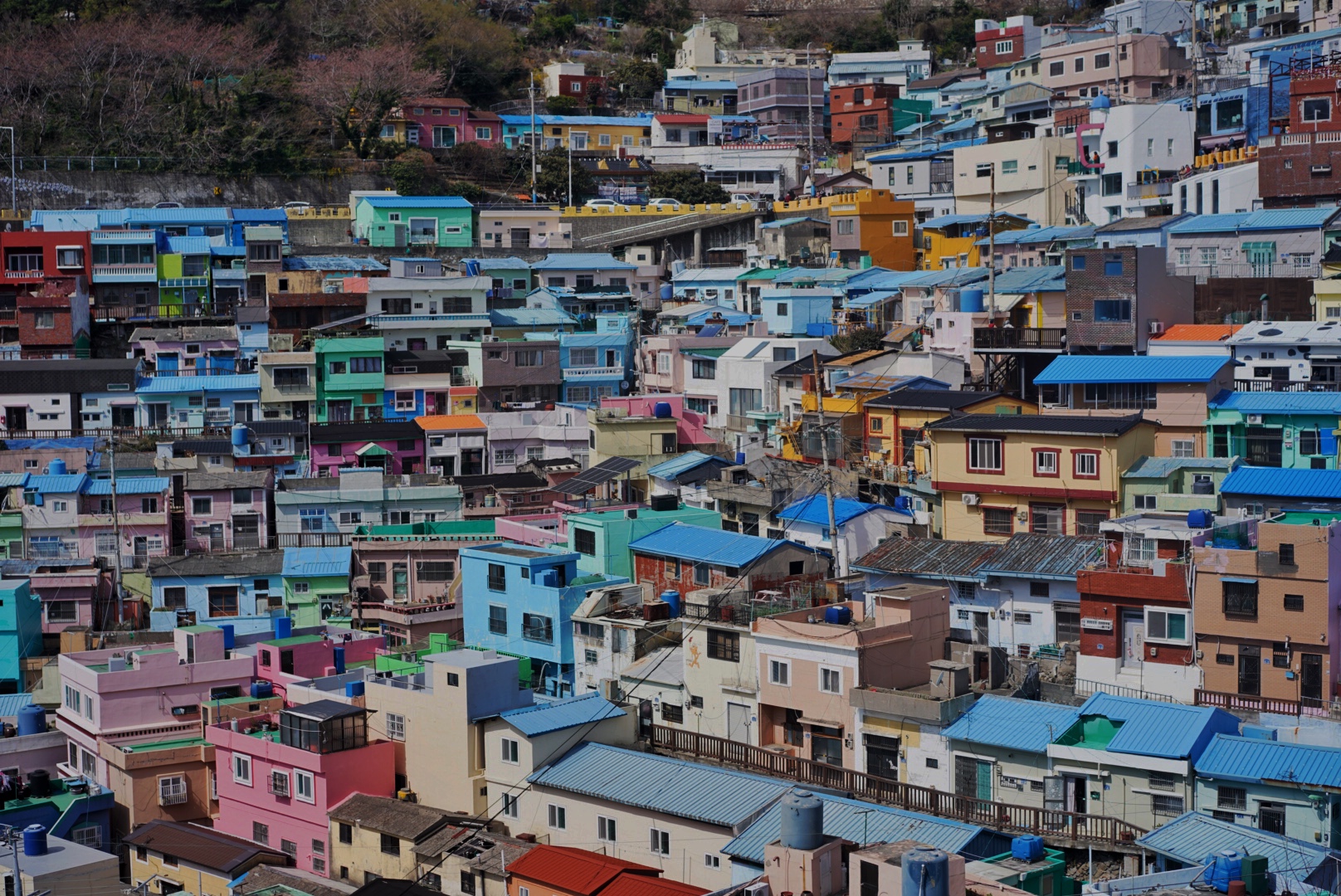
October 29, 2025
Busan is a coastal city and the second largest metropolis in South Korea, celebrated for its beautiful beaches, bustling port, and a blend of modern and traditional culture. Although just 2.5 hours away from Seoul by train, Busan could not be more distinct, boasting a laid-back beach culture vibe.
READ MORE: The Ultimate Guide to Visiting Seoul
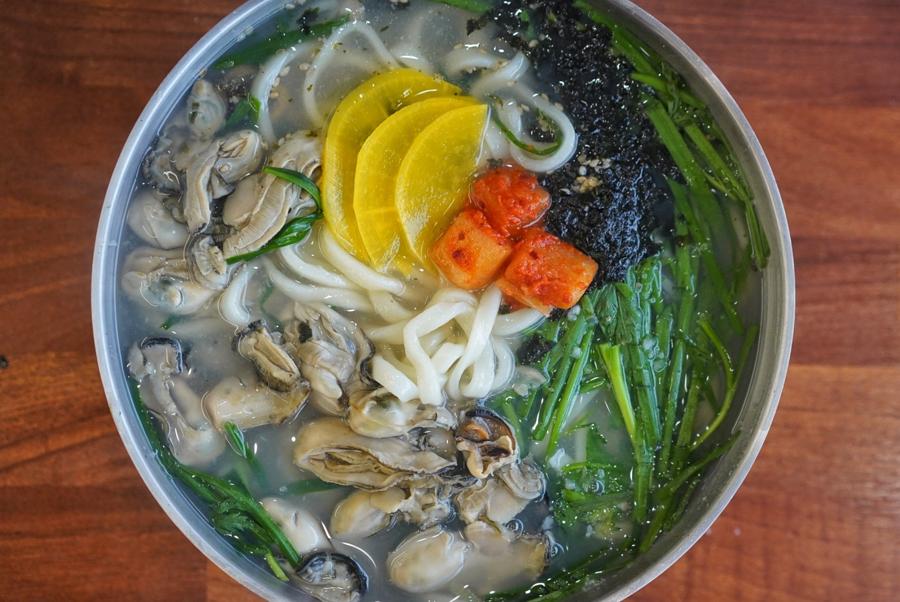
Seafood Noodles at Cheongtab
Busan visitors can enjoy fresh seafood at local markets, explore colorful cultural villages and historic temples, hike in nearby mountains, relax on sandy shores and dive into the modern art and music scenes.
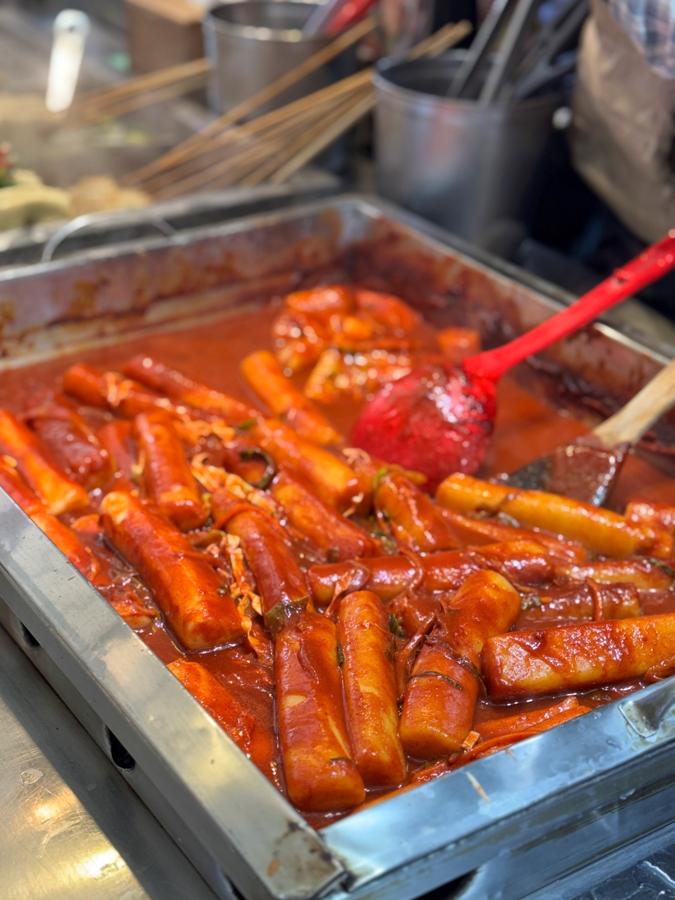
Tteokbokki at Gukje Market
Do note that due to its mountains and valley, Busan lacks a natural city center. Instead, there are several key districts connected by public transportation. As a result, it’s best to group activities by neighborhood as walking between destinations is not always viable. However, a 3-4 day visit is ample to get a first taste of this seaside city.
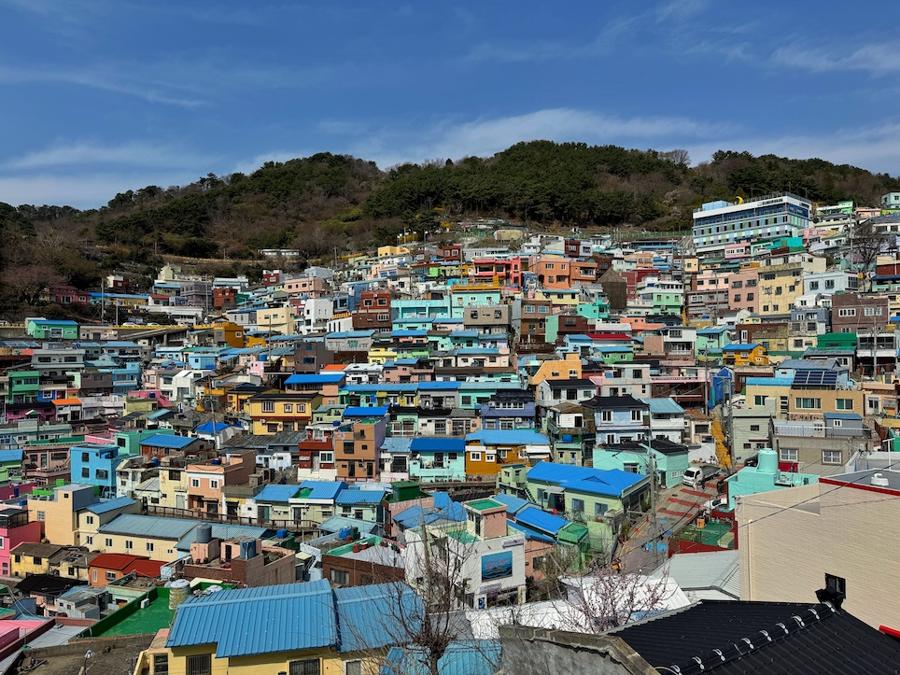
Gamcheon Cultural Village
Gamcheon Cultural Village: Dubbed the "Santorini of the East,” Gamcheon Culture Village is a colorful hillside village full of arts, culture, and architecture. Originally a settlement for Korean War refugees, it was transformed into an art hub through a regeneration project in 2009 that involved artists, residents, and the government. Today, visitors explore its maze-like alleys filled with murals, sculptures, and brightly painted houses, and enjoy panoramic views from the coastal mountain setting.
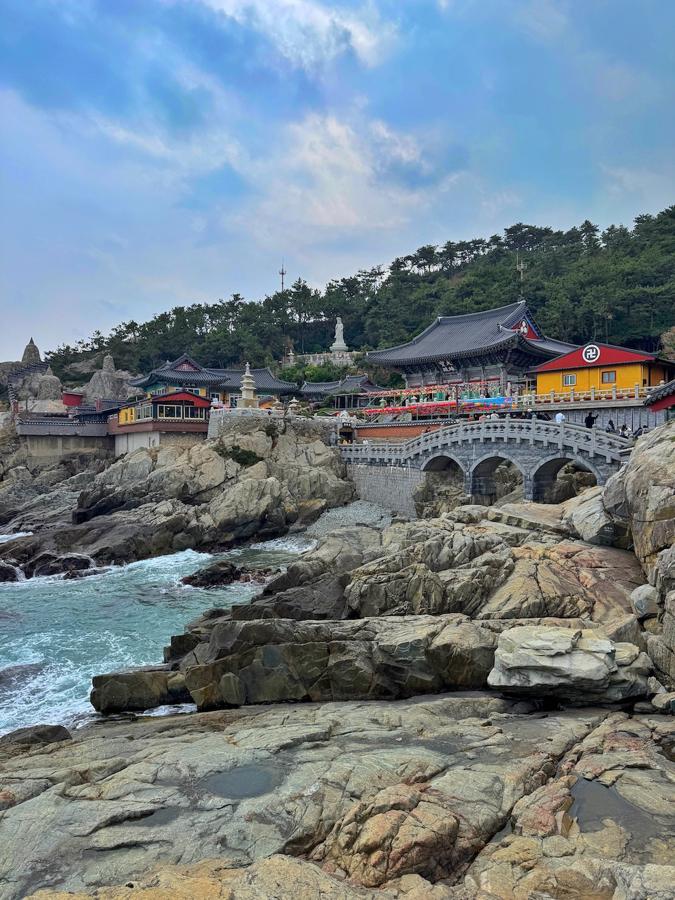
Haedong Yonggungsa Temple
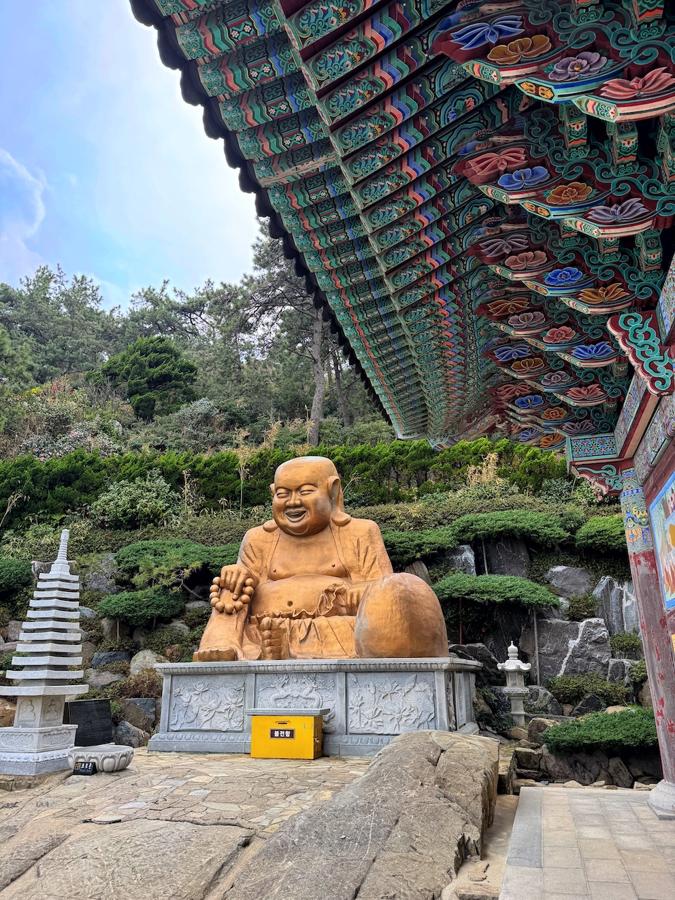
Haedong Yonggungsa Temple
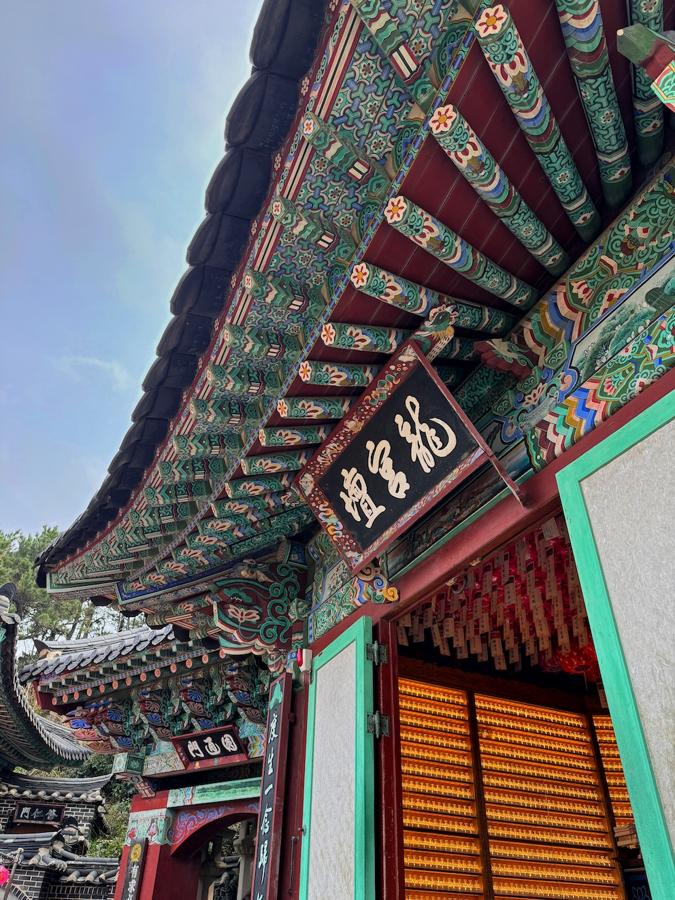
Haedong Yonggungsa Temple
Haedong Yonggungsa Temple: Haedong Yonggungsa is a Buddhist temple, notable for its breathtaking coastal location on a cliff overlooking the East Sea. Founded in 1376 during the Goryeo Dynasty, it is one of the few temples in Korea situated by the sea. The temple complex features impressive architecture, numerous statues, and a challenging 108-step stairway leading down to the main sanctuary.
40 Steps Cultural and Tourism Street: This 450-meter-long area commemorates the hardship and lives of refugees after the Korean War. It is decorated with sculptures, colorful murals, and mosaic staircases, providing a glimpse into the city's post-war history through art. The street also features cafes and shops, making it an ideal spot for sightseeing, photography, and enjoying local culture.
Beomeosa Temple: This serene Buddhist temple is nestled in the mountains, and a good place to explore traditional Korean architecture and spirituality. Founded in 678AD and located on Geumjeongsan Mountain, it’s known for its historical importance as one of the nation's great temples, beautiful traditional architecture, and serene mountain setting for a visit or overnight temple stay.
Haeundae Neighborhood and Dongbaek Island: One of South Korea’s most popular summer destinations, this tourist hub is filled with luxury hotels and scenic views – especially along Dongbaek Island (a forested area perfect for a coastal walk just 30-60 minutes from Haeundae Beach) – busy nightlife, and sprawling beach. Haeundae also has its own local market, filled with traditional Korean fare and seafood.
Dalmaji Hill: This scenic coastal area in Busan's Haeundae district is well-liked for its ocean views, walking paths, art, and stunning sunsets. It serves as a tranquil escape from the city with parks, viewpoints, and cafes along Moontan Road. It is the destination for enjoying nature, photography, and cultural experiences, located near Haeundae Beach.
Dongnae Eupseong Walled Town: Dongnae Eupseong Walled Town is a historic fortress, originally built during the Goryeo dynasty and significantly expanded in 1731. Today, the site features restored walls, gates (like Bukmun and Insaengmun), and command posts (Dongjangdae, Seojangdae, and Bukjangdae). As this historic location is off the typical tourist track, and located in a residential part of Busan, it makes for a peaceful walk through nature.
Hwangnyeongsan Mountain: Hwangnyeongsan Mountain is a large, wooded mountain known for its scenic hiking trails and panoramic views, especially at night. It features a historic beacon mound and an observatory that offers expansive cityscapes. The mountain is accessible via driving or hiking and is particularly busy in the spring for cherry blossoms and in the evening for its nighttime city lights.
Jeonpo Cafe Street: Jeonpo Cafe Street is a trendy area spanning a labyrinth of independent cafes and boutiques. Once a district for tool shops, it has been transformed into a popular hub for young Koreans and tourists seeking a youthful, artistic, and sentimental atmosphere for coffee hopping and shopping.
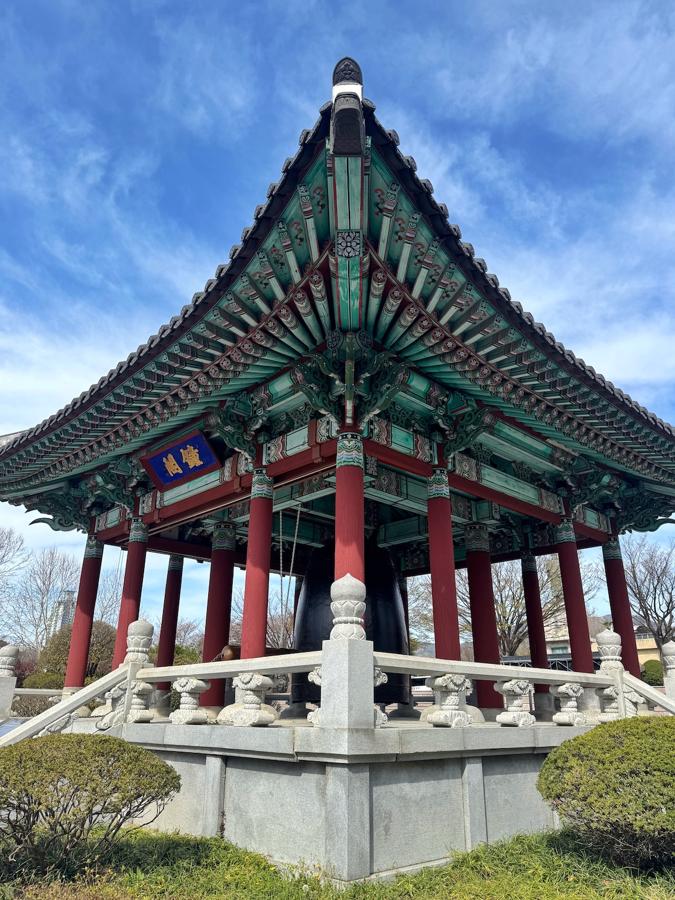
Yongdusan Park
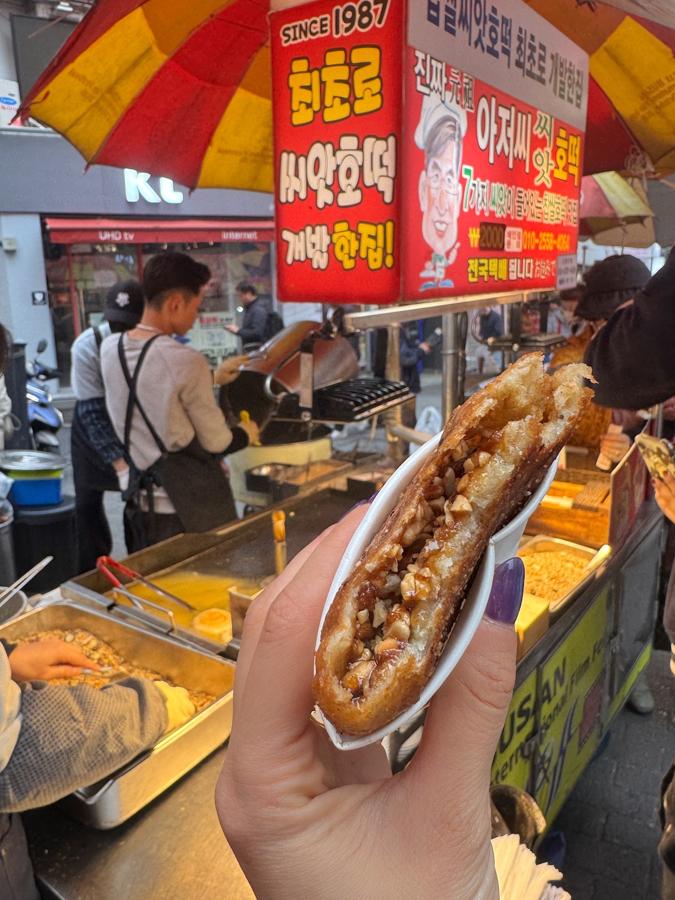
Hotteok
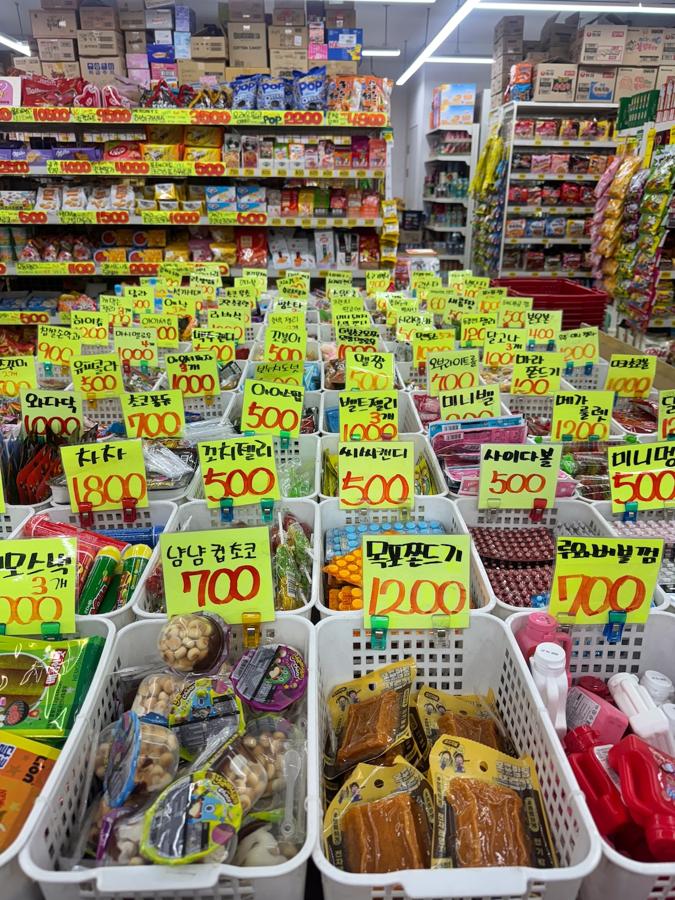
BIFF Square Shopping
BIFF Square: A buzzing walking street for shopping and snacking, BIFF Square is renowned for its delicious and affordable street food, such as hotteok (brown sugar filled pancakes with cinnamon, sunflower seeds, pumpkin seeds, and peanuts), tteokbokki (rice cakes), and various skewers, especially at night. In addition to food, the area is a shopping street with a variety of international and local brands. Just off of BIFF Square, visitors can stop by Yongdusan Park to enjoy the cherry blossoms in spring and pagoda views.
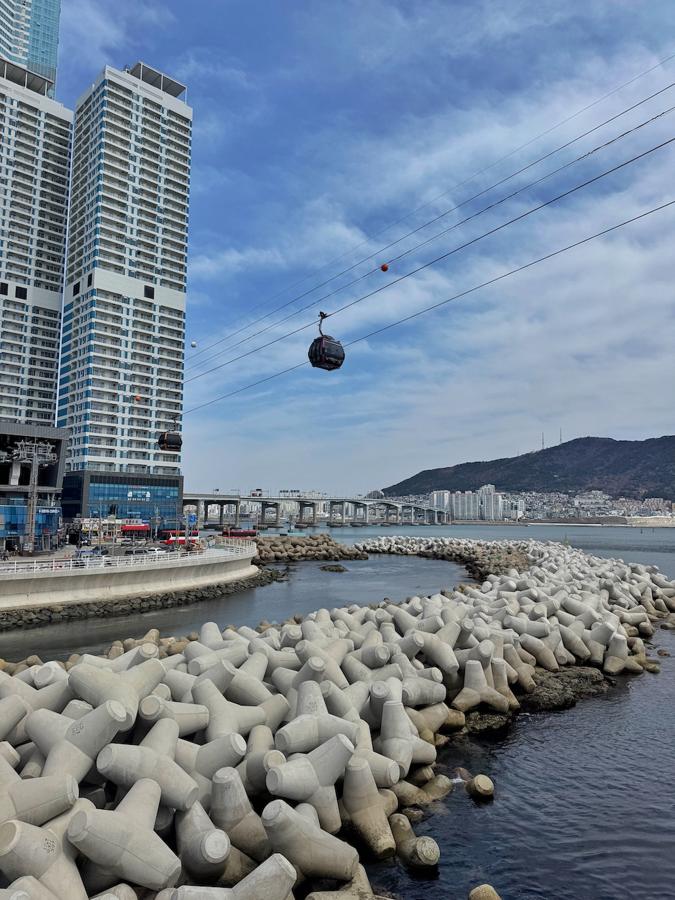
Songdo Beach
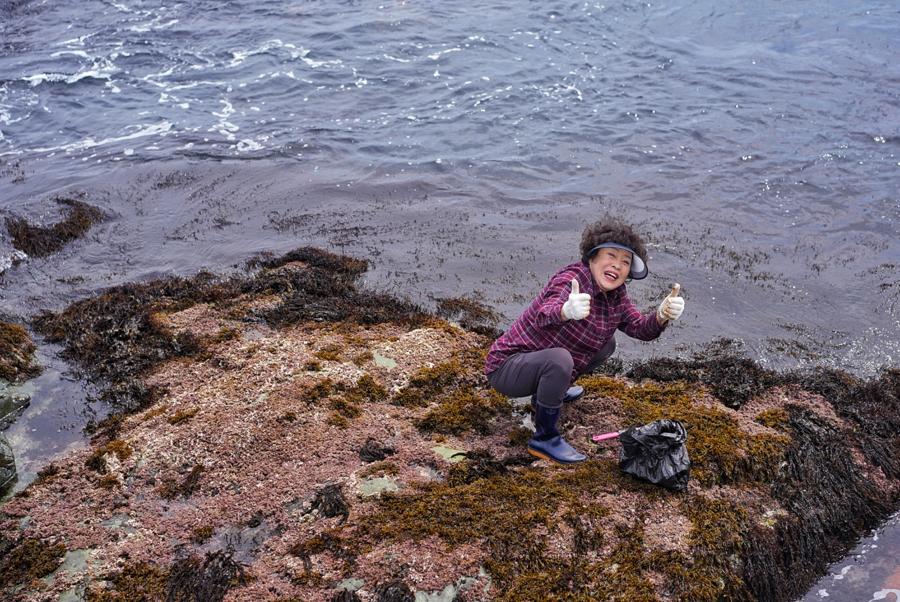
Songdo Beach
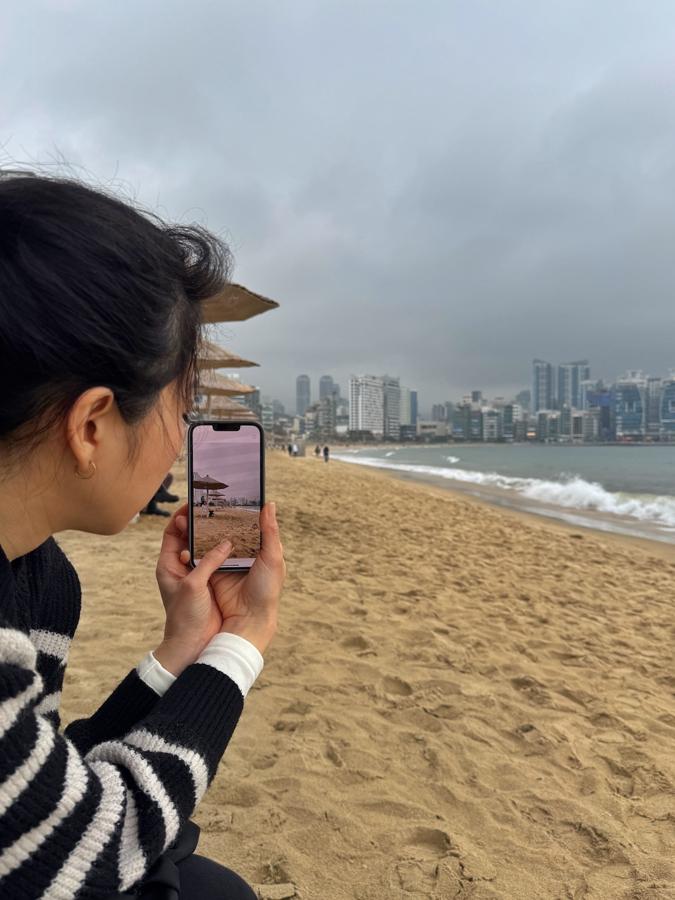
Haeundae Beach
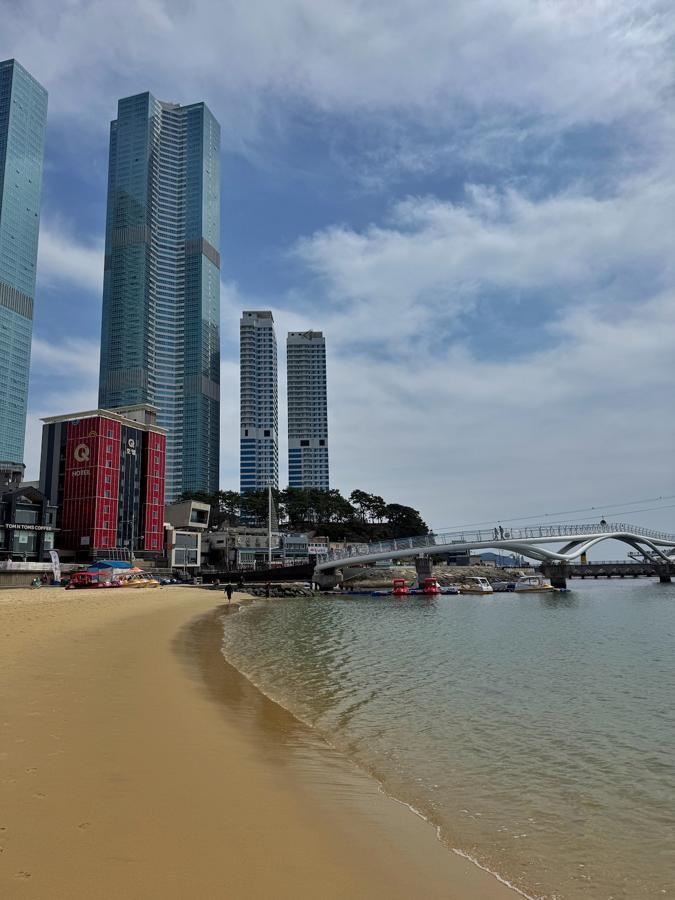
Songdo Beach
Haeundae Beach: The most famous beach in Busan, Haeundae features a 1.5-kilometer-long stretch of white sand and luxury hotels. Nearby, there’s also a great lunch market, and street performers in the evenings. Due to its popularity, this beach can get quite crowded at peak season.
Gwangalli Beach: Beloved for its spectacular nighttime view of the Gwangan Bridge, this beach is a common spot for its lively atmosphere and numerous cafes and restaurants.
Songdo Beach: This is Korea's first public beach, a quieter alternative to Haeundae or Gwangalli. This beach is also favored amongst local fisherwoman who come to collect mollusks and seaweed. Grab a spot on the rocks and enjoy the tranquility of the true Busan.
Songjeong Beach: Called "surfer's paradise," this beach is for those who want to surf, with consistent waves and shallow water for beginners. It's less crowded than Haeundae and has a more natural feel.
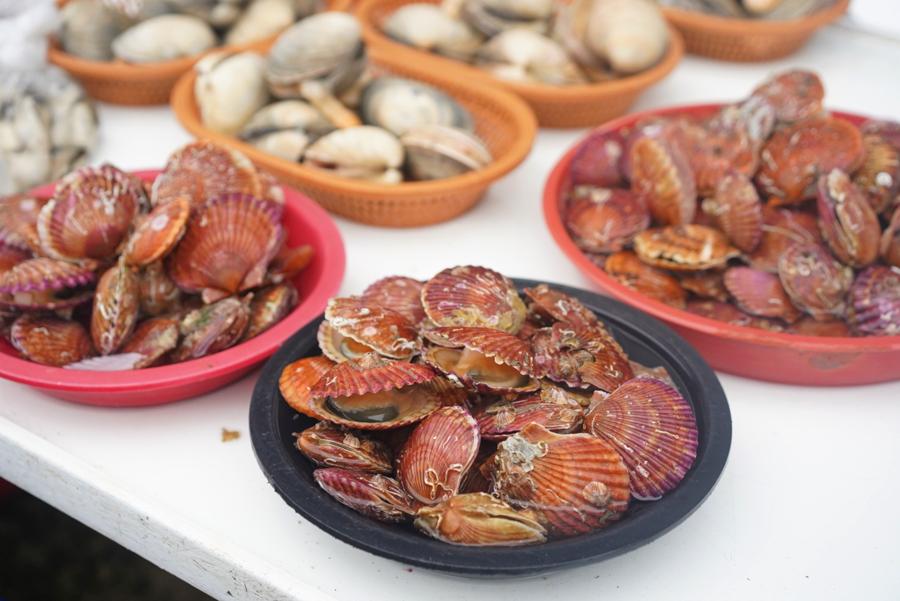
Jagalchi Market
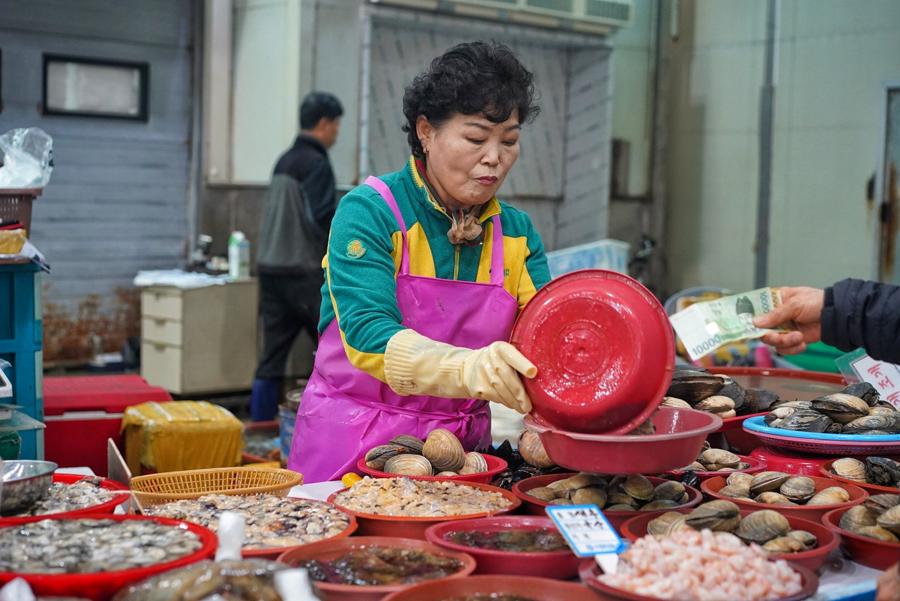
Jagalchi Market
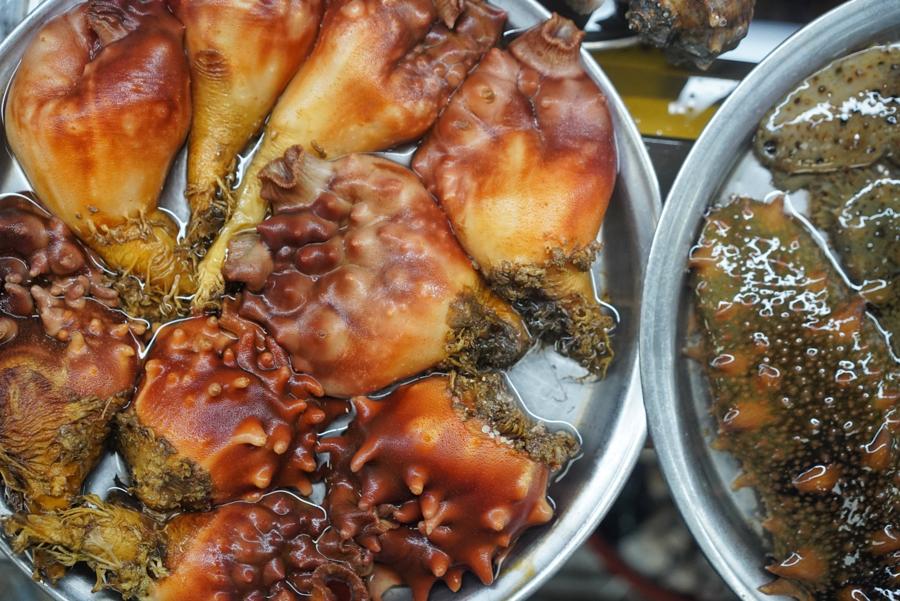
Jagalchi Market
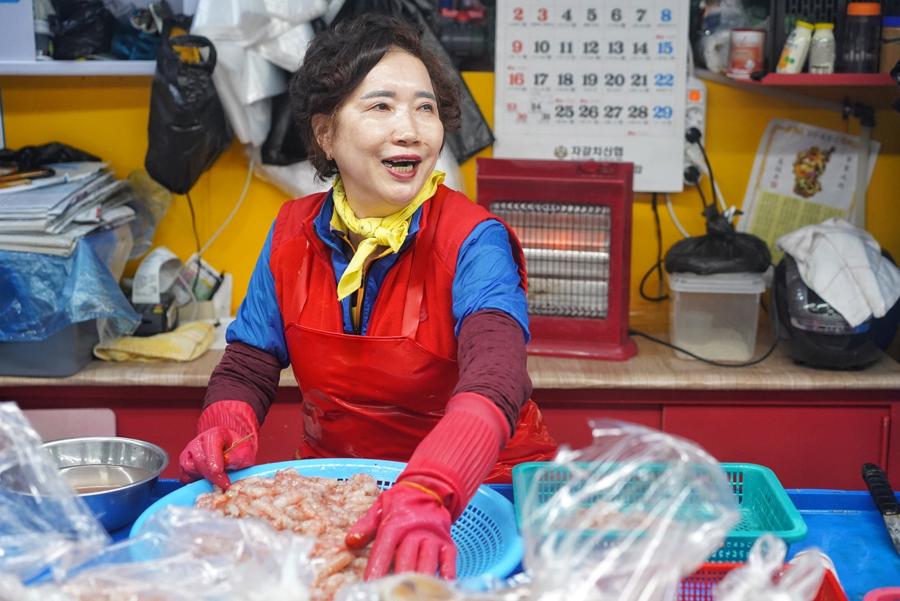
Jagalchi Market
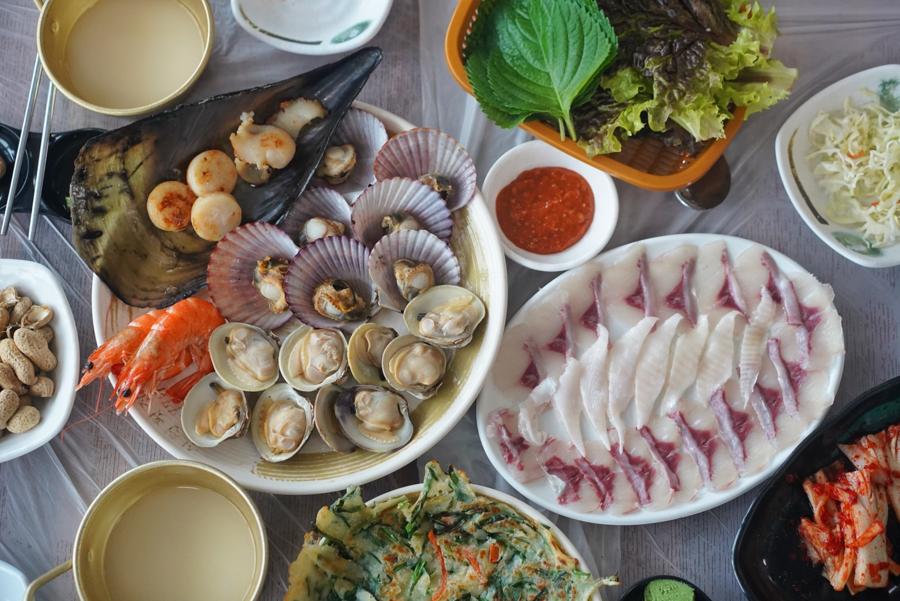
Jagalchi Market
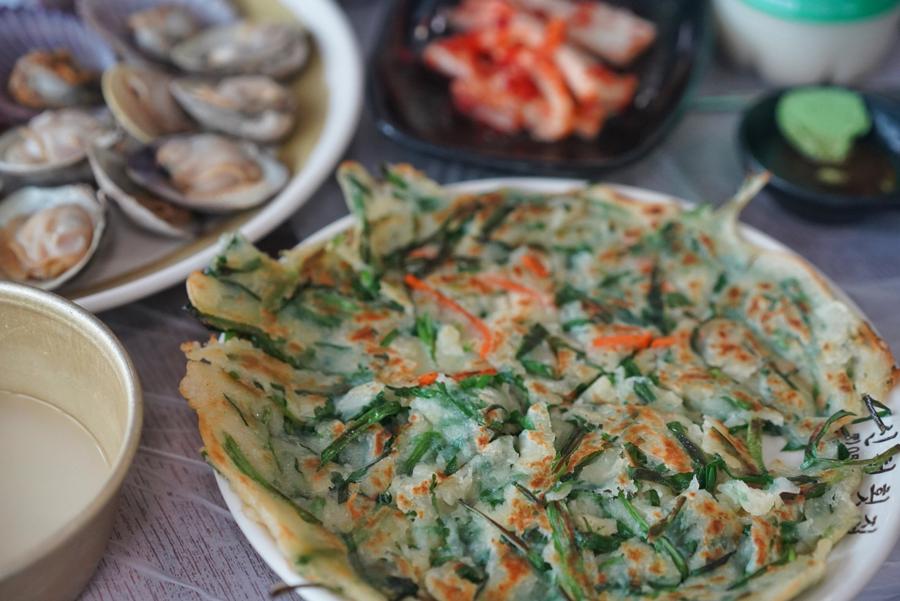
Jagalchi Market
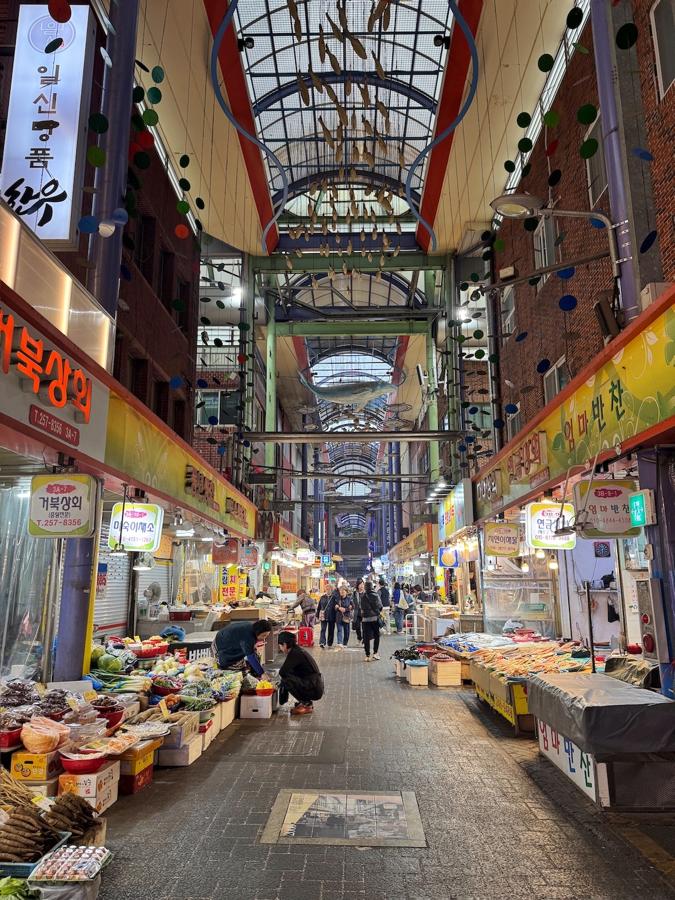
Bupyeong Market
Jagalchi Market: This is the biggest live and dried seafood market in South Korea. Here, there are over 200 varieties of all things sea creatures bought and sold daily, supplying the city (and many parts of the country) with the freshest from the ocean’s bounty. Visitors can peruse the aisles, sampling sea fare, purchasing their preferred fresh seafood, and feasting at the upstairs stalls where the vendors cook your purchased seafood for you. This is a quintessential Busan pastime not to be missed, but do note that the fresh seafood here is slightly more expensive, with an average meal for two going for 60-80,000 won. Most sets include raw sliced local fish (hoe), seafood and green onion pancakes (dong-nae pajeon), and assorted cooked crustaceans, mollusks and fish. Washed down with a copper cup full of makgeolli, this entire experience is seafood heaven.
Bupyeong Market: Favored for its street food, international food options, and goods like liquor and clothing, this traditional market transforms from a daytime market, selling fresh produce, seafood, clothes, liquor, and electronic goods, into Korea's first permanent night market, which is particularly crowded in the evenings with stalls selling international and Korean dishes, like tteokbokki, grilled pork belly, banh xeo, and seafood.
Pro tip: Make sure to visit the narrow street of the end of the market, known as Book Street of Bosudong, containing many secondhand novels.
Gukje Street Market: This historic market is located in Napondong with a vast array of goods and street food. Founded by Korean War refugees in 1945, it’s home to everything from clothing, electronics, and household goods to traditional Korean snacks and street food. The market is a major commercial and cultural center, frequented by both locals and tourists.
Seomyeon Market: This market includes both a large traditional market with fresh produce and seafood, and an underground shopping center for clothing and accessories at more affordable prices. The area is famous for its local restaurants, including those serving dishes like noodle soup, fried chicken, and pork and rice soup.
Busan's cuisine is heavily influenced by its identity as a major port city, with abundant fresh seafood, rich pork dishes, and distinct takes on classic Korean foods. Many local delicacies have origins in the city's lively street markets and history.
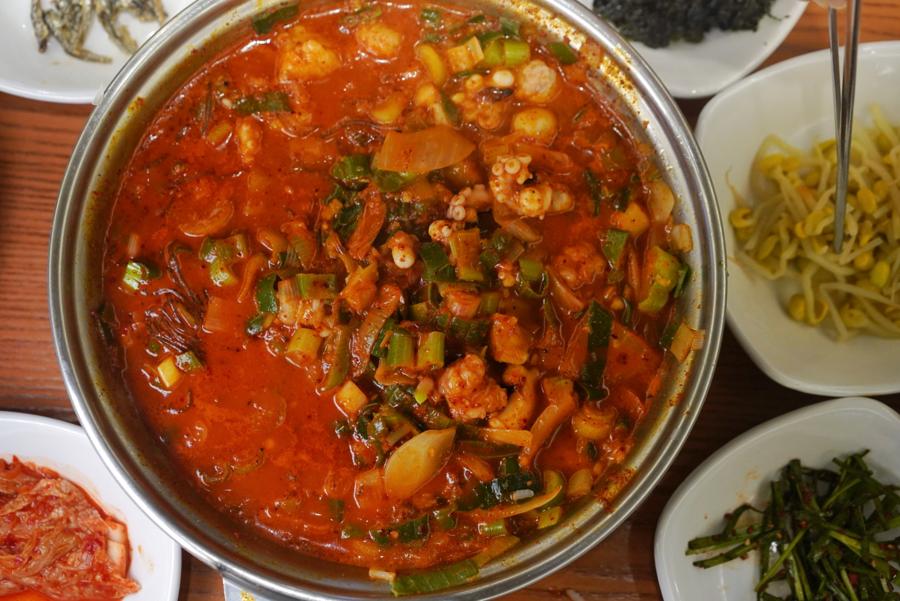
Gaemijip
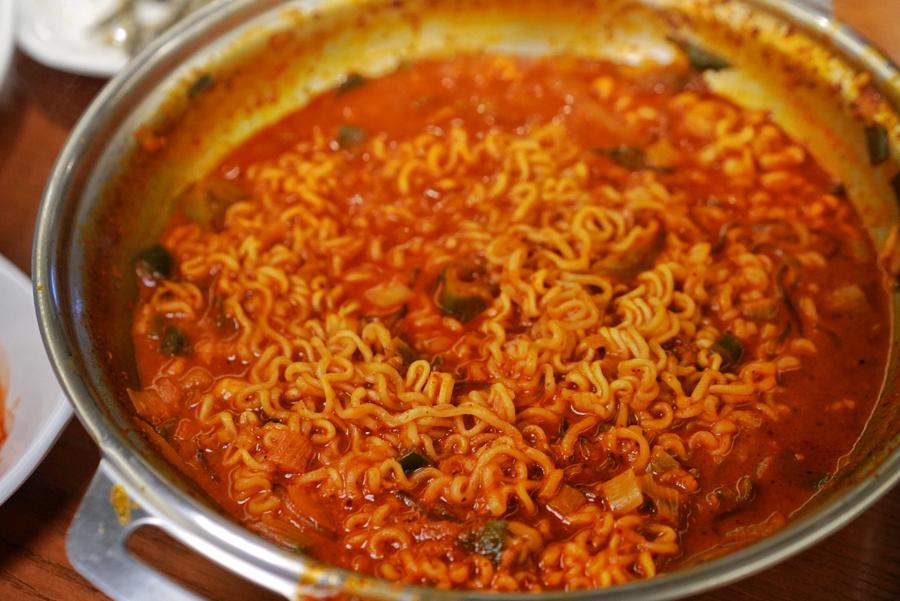
Gaemijip
Gaemijip: This Busan institution doles out stir-fried octopus dishes like nakgop bokkeum (octopus, small intestine, shrimp) and naksae bokkeum (octopus and shrimp), which are cooked in a hot pan at diners' table slathered in a secret spicy sauce. Most diners also add rice, ramen, or udon to their dish to soak up more of the sauce. The set goes for 13,000 won per person.
21-1 Junggu-ro 30beon-gil, Jung-gu, Busan
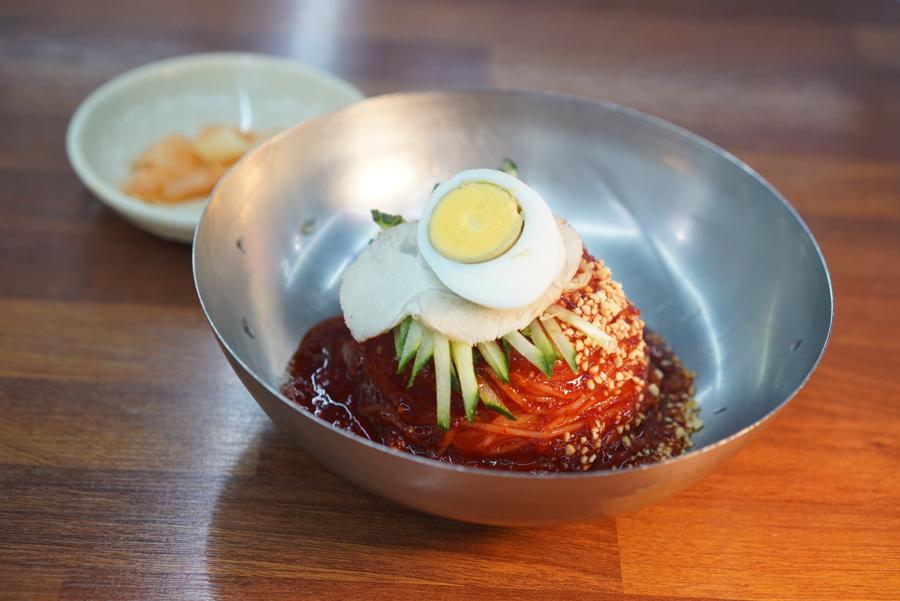
Choryang Milmyeon
Choryang Milmyeon: Located near Busan's main train station, this noodle house specializes in milmyeon, a Busan signature composed of cold wheat-based noodles in a zippy sauce, marked by its refreshing, tangy, and slightly sweet flavor. The long, silky strands are cut with scissors before eating, enjoyed alongside a complimentary warm broth. The restaurant also cooks up large, chewy steamed dumplings (mandu) and a seafood kalguksu, all at pocket-friendly prices of 7-10,000 won.
225 Jungang-daero, Dong-gu, Busan
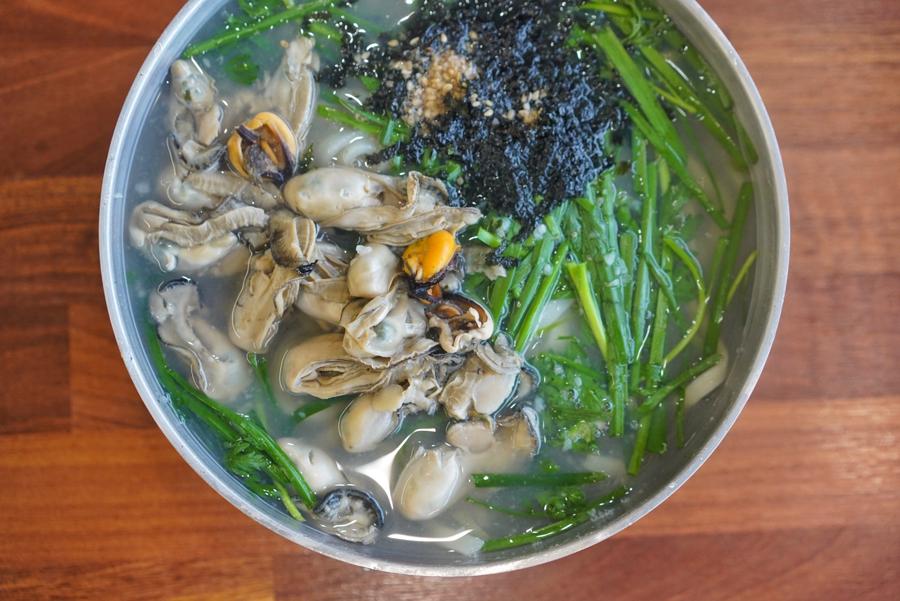
Cheongtab
Cheongtab: This humble canteen specializes in hot seafood soup for 9,000 won, with each heaping bowl brimming with more than 20 fresh oysters along with ropey, udon-like noodles. The free flow banchan and pickles amp up the seafood’s inherent sweetness.
361 Nampo-dong 2(i)-ga, Jung-gu, Busan
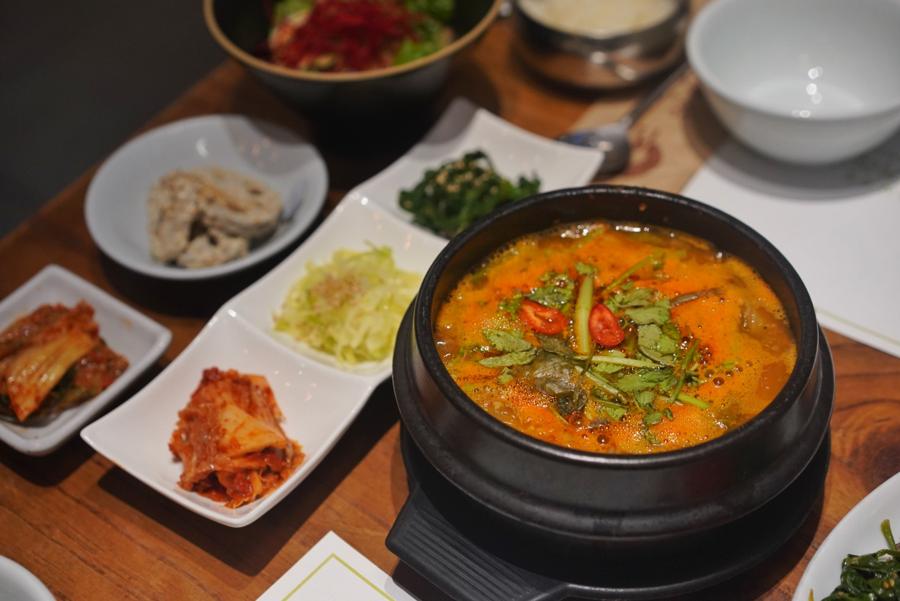
Bangpajae Hoetjip
Bangpajae Hoetjip: This sashimi and eel restaurant covers the gambit with seafood year-round across two floors. While the second floor serves a more refined set menu, the ground floor sees many a la carte comfort fare options, like hangover fish stew for 12,000 won that arrives tableside with banchan, rice, clam salad, and homemade pickles.
24 Gwanganhaebyeon-ro 294beon-gil, Suyeong-gu, Busan
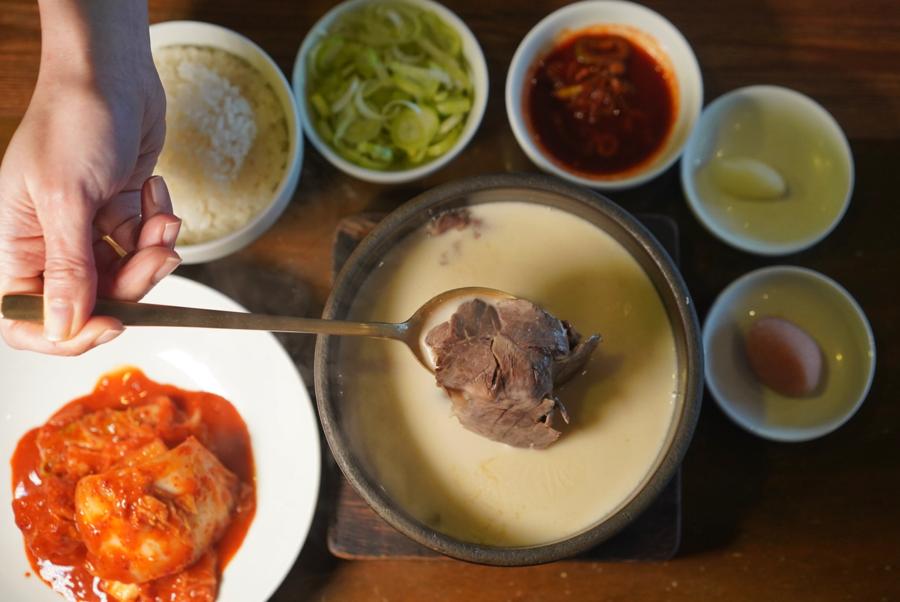
Geodae Gomtang
Geodae Gomtang: The poster child for collagen-rich milky beef bone soup laden with slices of tender Hanwoo beef, Geodae Gomtang is what you think of when craving comfort food. The Thick and Rich Milky Beef Bone Soup will set you back 22,000, including rice and kimchi, with the superior quality meat and ingredients warranting the heftier price tag.
163, Haeundaehaebyeon-ro, Haeundae-gu, Busan
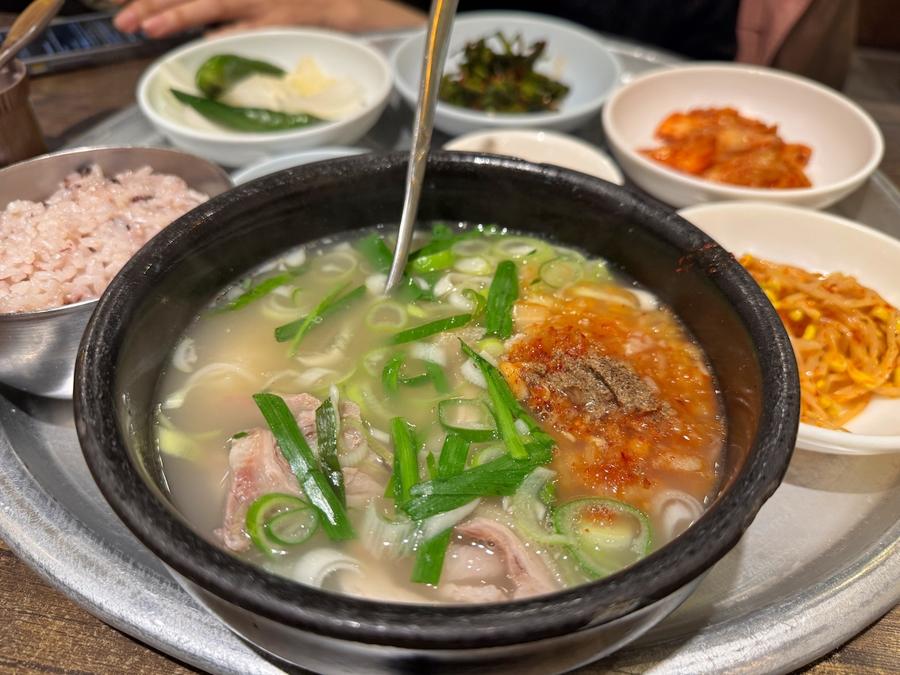
Hapcheon Gukbapjip
Hapcheon Gukbapjip: This establishment is ranked as one of the best for gukbap, a Korean dish of hot soup with cooked rice mixed in. The soup here, ladled in ttukbaegi (a traditional Korean earthenware pot), sees savory, umami-rich broth that is achieved by boiling the meat multiple times.
235 Yongho-ro, Nam-gu, Busan
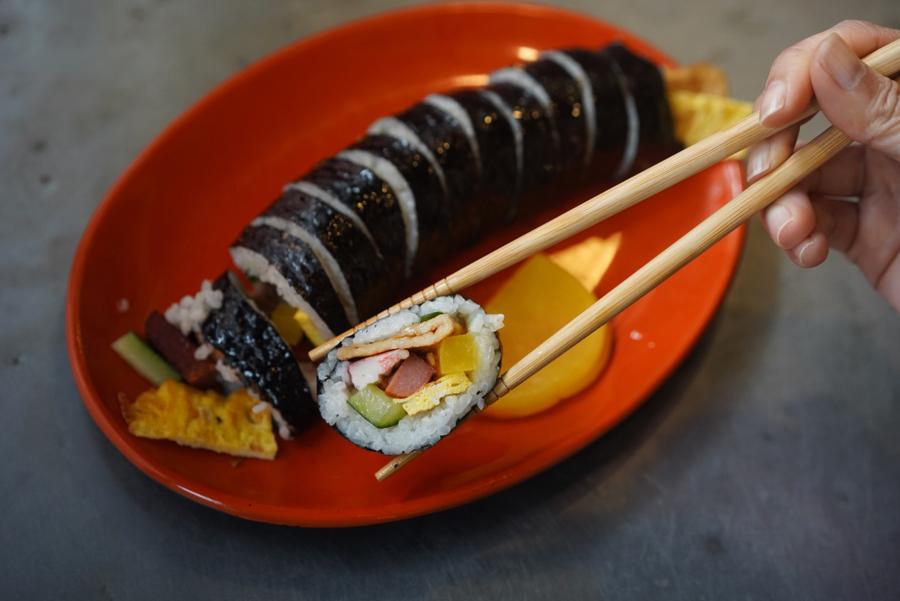
Hoon’s Kimbap
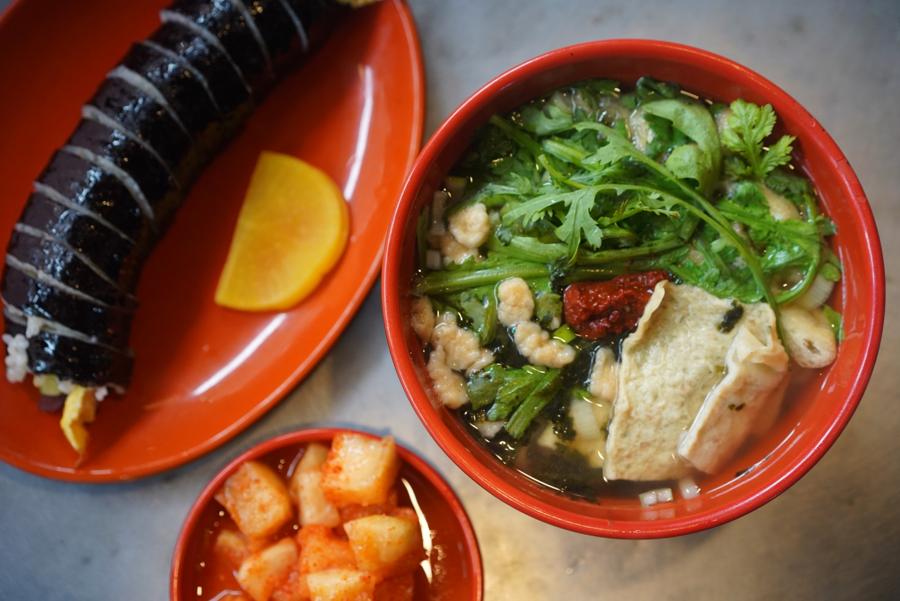
Hoon’s Kimbap
Hoon’s Kimbap: This long-standing eatery sells just two items: log-size gimbap rolls and udon noodles with fish cakes for 4,000 and 6,000 won respectively. After garnering a cult following while selling out of the back of a van, the owners bought a brick-and-mortar spot that tailors to the afternoon into late-night dining crowd seeking out great value, hearty comfort food in a local setting.
1 Haeundaehaebyeon-ro 209beonga-gil, Haeundae-gu, Busan
Nagahama Mangetsu: This buzzing ramen restaurant is the Korean outpost of a Japanese chain recognized for its authentic, rich tonkotsu (pork bone) broth ramen and crispy-bottom gyoza, which have earned it a Michelin Bib Gourmand award. Expect long lines, especially during peak hours, for snagging one of the coveted bar-style seats.
57 Udong 1-ro, Haeundae-gu, Busan
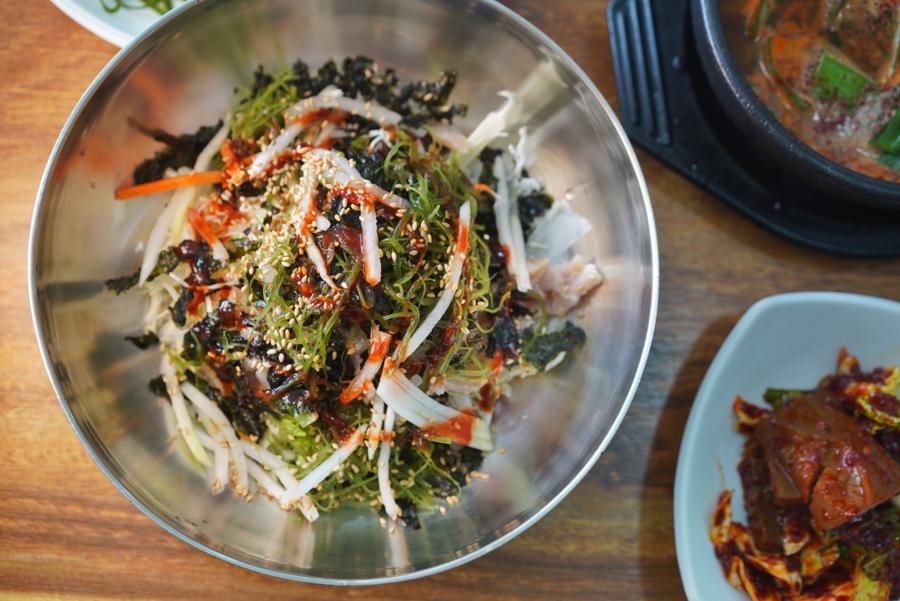
Haemul Saenggak
Haemul Saenggak: This seaside seafood restaurant sits adjacent to Songdo Beach, making it an ideal stop during a visit to the ocean. Here, the menu sees a variety of seafood BBQ, seafood soups, and seafood rice and noodle dishes, like raw fish bibimbap and spicy fish soup set, at affordable prices.
157-1 Songdohaebyeon-ro, Seo-gu, Busan
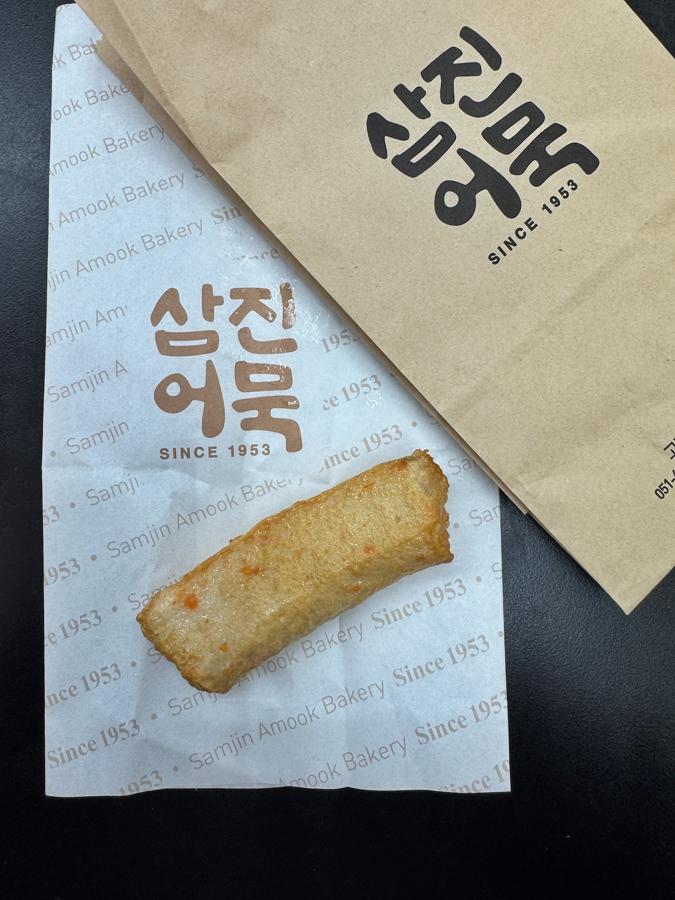
Samjin Fish Cake History Museum
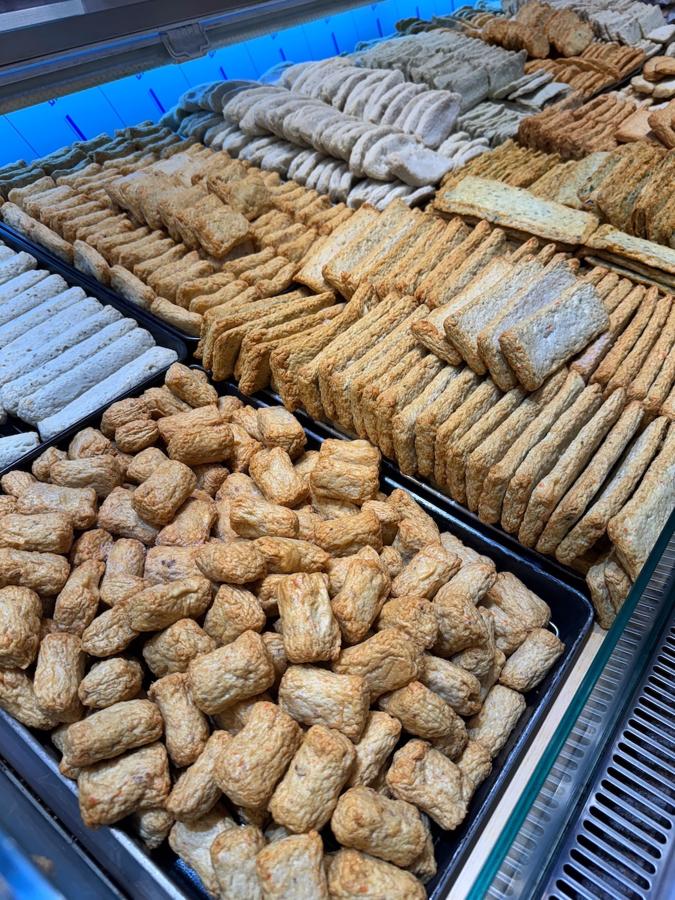
Samjin Fish Cake History Museum
Samjin Fish Cake History Museum: This specialty museum is located at the flagship store of Samjin Amook, Busan's oldest fish cake producer, founded in 1953. Visitors can learn about the history of Busan fish cakes, see exhibits of historical machinery, buy a variety of fish cakes (1,500-4,000 won each), and even make their own fish cakes in workshops (for 15,000 won per person).
36 Taejong-ro 99beon-gil, Yeongdo-gu, Busan
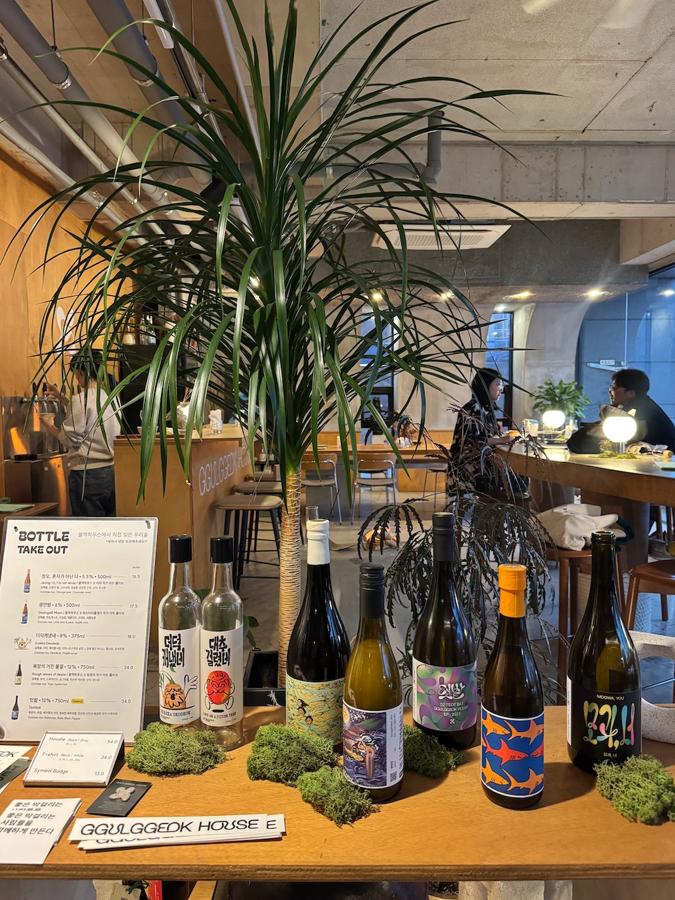
Ggulggeok House
Ggulggeok House: This stylish, hip makgeolli brewery and pub spotlights this traditional Korean rice wine, making it trendy again for the younger generation. Here, craft makgeolli is sold on tap and by the bottle, infused with local fruits, herbs, and ingredients. The food menu sees contemporary takes on classic Korean dishes, plus several vegetarian and vegan-friendly options.
Pro tip: Make sure to order the tasting flight so you can sample as many of the different offerings as possible. The bottles make for great takeaway gifts.
184-1 Gwangnam-ro, Suyeong-gu, Busan
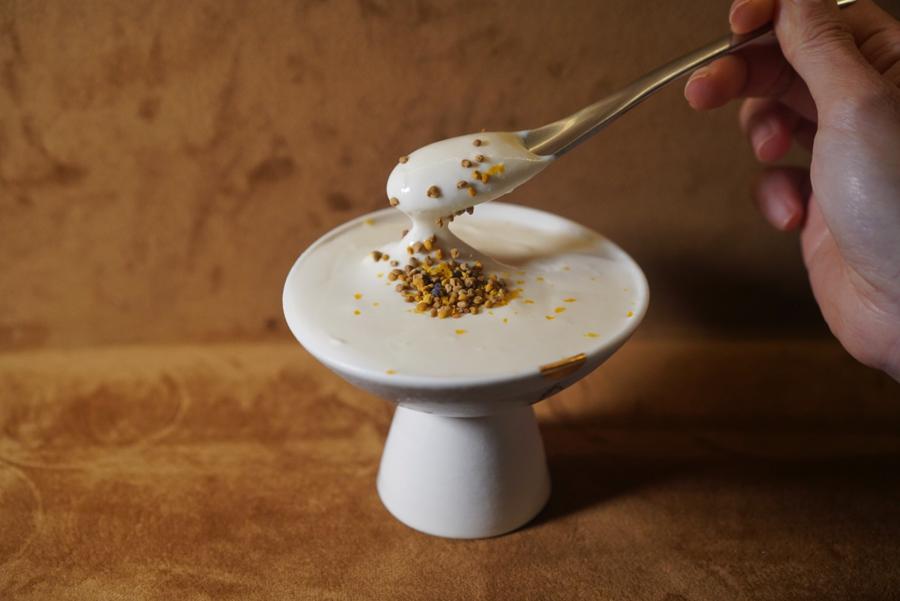
Corduroy Fellaz
Corduroy Fellaz: On par with other internationally-recognized bars, Corduroy Fellaz boasts a minimalist-chic atmosphere, creative, high-quality signature cocktails, and energetic, professional staff. The bar emphasizes crafting unique experiences by blending tradition with modern mixology, using local ingredients. They are also involved in collaborative projects, such as "LocalRising," that incorporate partnerships with local businesses and brands.
53 Millakbondong-ro 11beon-gil, Suyeong-gu, Busan
Baunova Coffee: A cafe in Busan's historic downtown, near Jagalchi and International Markets, Baunova Coffee emphasizes an analog sensibility with modern design. With high-quality, on-site roasted coffee, brewed by certified baristas, this café aims to be a welcoming space to relax and recharge.
Pro tip: Make sure to order the Einspanner, a creamy, rich coffee concoction guaranteed to put some pep in your afternoon step.
37 Jeonpo-daero 186beon-gil, Busanjin District, Busan
READ MORE: The Ultimate Guide to Visiting Seoul

My name is Sophie Steiner, and welcome to my food-focused travel blog. This is a place to discover where and what to eat, drink, and do in Shanghai, Asia, and beyond. As an American based in Shanghai since 2015 as a food, beverage, travel, and lifestyle writer, I bring you the latest news on all things food and travel.
Your email address will not be published.
Be the first to comment!